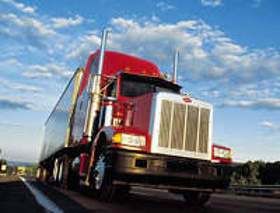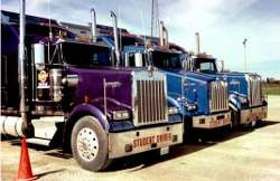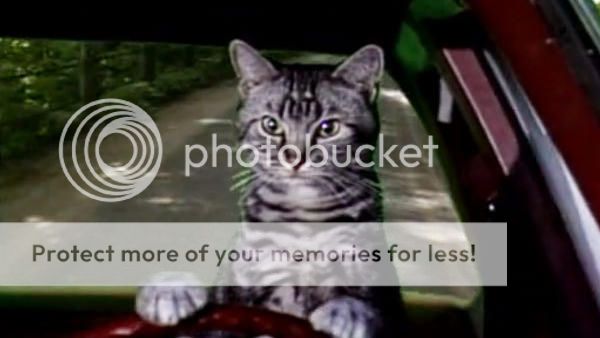Help! I'm Starting To Regret Picking This School, Not Sure What To Do
Topic 14499 | Page 1
Hey MT. I totally understand your concerns.
First of all, most admissions people (recruiters) don't truly understand the industry on a deep level so they may not really understand the implications of what they're saying. You should absolutely go for the Class A and forget that Class B idea. You can learn to shift just as well as anyone else coming off the street. That's what schools are for. They should be able to take just about anyone off the street and teach them enough to pass the skills portion of the CDL exam and obtain their CDL license.
If I were you I would talk to the instructors at the school, not the recruiter, and tell them your situation. Tell them you had every intention of getting your Class A and you don't see any reason to settle for a Class B.
Also, make sure their training for Class A is on manual transmissions, not automatics. Most states will put a restriction on your CDL that says you can only drive automatics if you tested on an automatic. You certainly don't want that.
But there's no reason you should settle for a Class B. We never recommend a Class B to anyone. You'll really limit your job opportunities and your money making potential.
CDL:
Commercial Driver's License (CDL)
A CDL is required to drive any of the following vehicles:
- Any combination of vehicles with a gross combined weight rating (GCWR) of 26,001 or more pounds, providing the gross vehicle weight rating (GVWR) of the vehicle being towed is in excess of 10,000 pounds.
- Any single vehicle with a GVWR of 26,001 or more pounds, or any such vehicle towing another not in excess of 10,000 pounds.
- Any vehicle, regardless of size, designed to transport 16 or more persons, including the driver.
- Any vehicle required by federal regulations to be placarded while transporting hazardous materials.
Dm:
Dispatcher, Fleet Manager, Driver Manager
The primary person a driver communicates with at his/her company. A dispatcher can play many roles, depending on the company's structure. Dispatchers may assign freight, file requests for home time, relay messages between the driver and management, inform customer service of any delays, change appointment times, and report information to the load planners.
Admissions guy recommends Class B CDL to me instead of Class A because I have never driven manuals before. He said people who have never driven manuals have a 50/50 chance of passing Class A.
This is complete nonsense. I got my class A just fine and had never driven a manual before. Most will tell you it's actually better to not have to unlearn bad habits from driving a synchronized manual. The shifting is going to be nearly the same either way in a Class A or B, so why exactly would it matter?
So class hasn't started yet and I'm just wondering, should I just stay with the Class B for now and not worry about it? (I am currently living in San Jose, CA and there looks to be a lot of Class B jobs locally, but having a CDL A is nice so I have more opportunities and not have to worry about getting it upgraded to Class A later)
There might be plenty of jobs, but you'll find many of them do not pay very well. Better to get a Class A. If you have not started class yet, you should be entitled to a refund minus some small deposit. California is pretty strict in this regard, go over your school contract and find out how much they will refund you before class has started.
CDL:
Commercial Driver's License (CDL)
A CDL is required to drive any of the following vehicles:
- Any combination of vehicles with a gross combined weight rating (GCWR) of 26,001 or more pounds, providing the gross vehicle weight rating (GVWR) of the vehicle being towed is in excess of 10,000 pounds.
- Any single vehicle with a GVWR of 26,001 or more pounds, or any such vehicle towing another not in excess of 10,000 pounds.
- Any vehicle, regardless of size, designed to transport 16 or more persons, including the driver.
- Any vehicle required by federal regulations to be placarded while transporting hazardous materials.
Dm:
Dispatcher, Fleet Manager, Driver Manager
The primary person a driver communicates with at his/her company. A dispatcher can play many roles, depending on the company's structure. Dispatchers may assign freight, file requests for home time, relay messages between the driver and management, inform customer service of any delays, change appointment times, and report information to the load planners.
Go for the class a. Don't let them discourage you. You don't want to get a class b and regret not going for the class a. My school had plenty of people that never drove Manuel before and passed. You can do this. Good luck to ya.

As others have said go for the class A. On the first day of the school i attended an instructor asked who has driven a stick and who had not. He said, and it was reiterated several times throughout training, that those who had never driven a stick were better off because they had no habits to break. They liked teaching the newbies the right way from the ground up.
HOS:
Hours Of Service
HOS refers to the logbook hours of service regulations.
Thanks everyone! I am now on my way towards getting a CDL A license and I feel much better switching before it was too late.
CDL:
Commercial Driver's License (CDL)
A CDL is required to drive any of the following vehicles:
- Any combination of vehicles with a gross combined weight rating (GCWR) of 26,001 or more pounds, providing the gross vehicle weight rating (GVWR) of the vehicle being towed is in excess of 10,000 pounds.
- Any single vehicle with a GVWR of 26,001 or more pounds, or any such vehicle towing another not in excess of 10,000 pounds.
- Any vehicle, regardless of size, designed to transport 16 or more persons, including the driver.
- Any vehicle required by federal regulations to be placarded while transporting hazardous materials.
That's outstanding! Really glad to hear it. Keep us updated on how things go for ya.

Like CS said, I've also heard it's easier to learn when you've never driven a manual. One of the instructors at my upcoming school told me this. Which has me kinda worried because all I've ever driven were manual cars, so at this point it's kind of like I'm on auto-pilot. So I will probably have to really concentrate to get the double clutching down. Good thing you haven't started that Class B class yet!
Double Clutch:
To engage and then disengage the clutch twice for every gear change.
When double clutching you will push in the clutch, take the gearshift out of gear, release the clutch, press the clutch in again, shift the gearshift into the next gear, then release the clutch.
This is done on standard transmissions which do not have synchronizers in them, like those found in almost all Class A trucks.
Double Clutching:
To engage and then disengage the clutch twice for every gear change.
When double clutching you will push in the clutch, take the gearshift out of gear, release the clutch, press the clutch in again, shift the gearshift into the next gear, then release the clutch.
This is done on standard transmissions which do not have synchronizers in them, like those found in almost all Class A trucks.

Clutch neutral clutch gear. I drove a stick most of my life and picked it up fairly quick. Never really grasped floating gears though.
Floating Gears:
An expression used to describe someone who is shifting gears without using the clutch at all. Drivers are taught to "Double Clutch" or press and release the clutch twice for each gear shift. If you're floating gears it means you're simply shifting without using the clutch at all.
When I frist started shifting I was what they say making hamburgers because I was grinding gears,but I got the hang of it.You can too.
New Reply:
New! Check out our help videos for a better understanding of our forum features

















Preview:








 TT On Facebook
TT On Facebook
Admissions guy recommends Class B CDL to me instead of Class A because I have never driven manuals before. He said people who have never driven manuals have a 50/50 chance of passing Class A. So why does your school say it has 90% passing rate then? Why are other people, who are complete beginners, say they got the CDL A no problem? Were they paid reviewers? Why are other truck schools willing to teach complete beginners how to drive a tractor trailer? I feel like I just shot myself in the foot by taking up his recommendation to go for a Class B instead of finding some other school who is willing to teach a complete beginner in getting a Class A CDL.
So class hasn't started yet and I'm just wondering, should I just stay with the Class B for now and not worry about it? (I am currently living in San Jose, CA and there looks to be a lot of Class B jobs locally, but having a CDL A is nice so I have more opportunities and not have to worry about getting it upgraded to Class A later) Or ask for a refund? As for asking them to upgrade to Class A CDL, I don't trust them when the admissions guy said they have a 50/50 chance of passing a complete newbie.
CDL:
Commercial Driver's License (CDL)
A CDL is required to drive any of the following vehicles:
Dm:
Dispatcher, Fleet Manager, Driver Manager
The primary person a driver communicates with at his/her company. A dispatcher can play many roles, depending on the company's structure. Dispatchers may assign freight, file requests for home time, relay messages between the driver and management, inform customer service of any delays, change appointment times, and report information to the load planners.